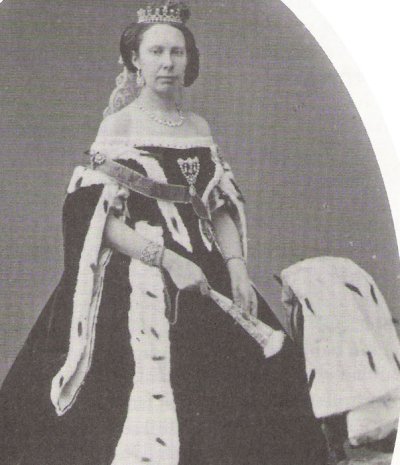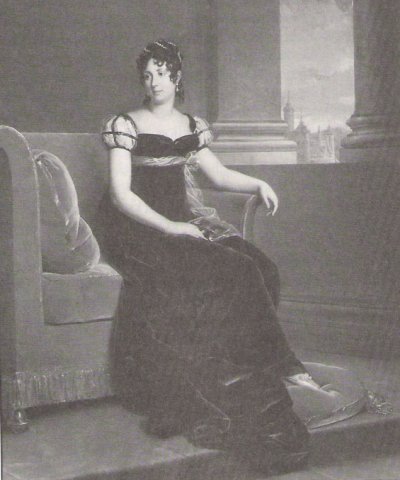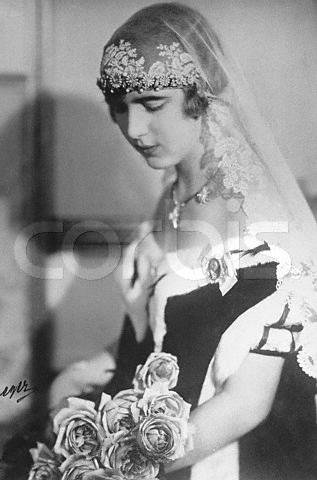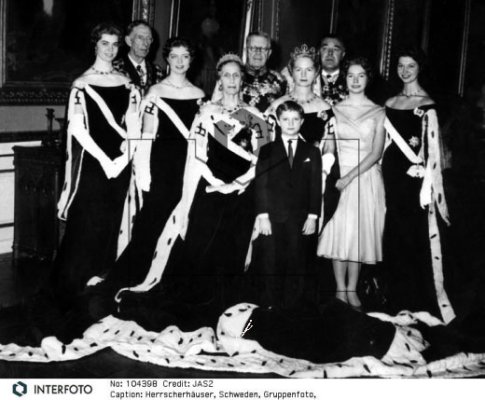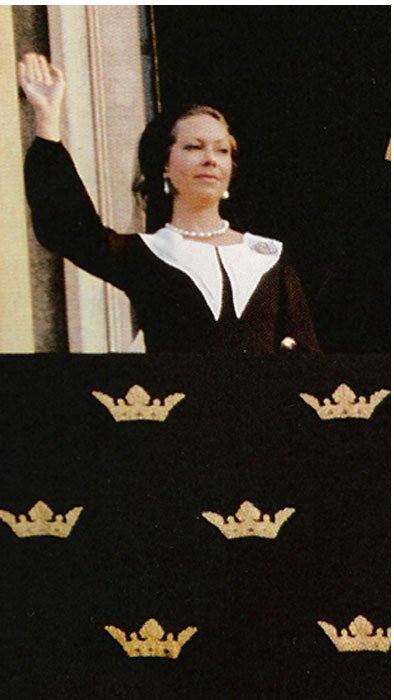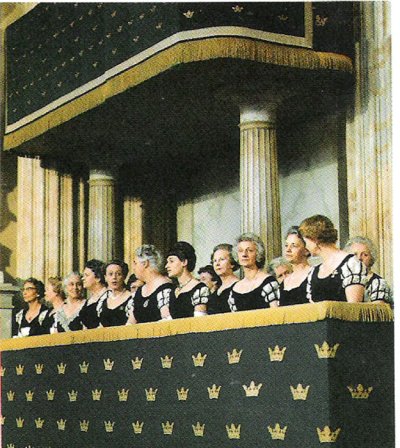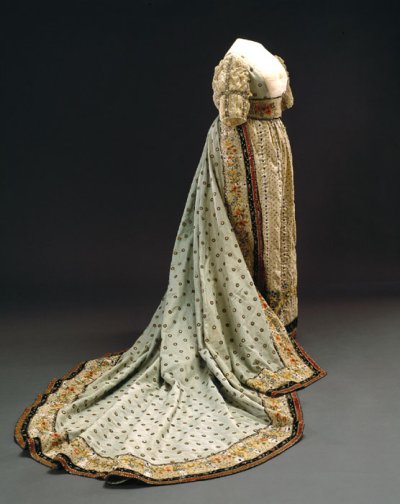fraxales said:
I agree with you - the speculation IS fun: almost like detective work...
I'm not sure who Princess Maria was (post #8), nor the "pretty princess" (#2) , was ... The one in post #2: it's unusual to see someone dressed like that, bearing flowers. Was that not, perhaps, her wedding? (I know the black sounds absurd...).
Oh, I saw the picture of the princess (on #2) a couple of days back in another of the Swedish threads...so she's there, I just don't recall the http: adress off of the top of my head - understandable, Ithink

but on to the point: it said on the caption that it was the day of her first presentation at court (her "coming-out") which would explain the flowers (recalling for example the debuttantes at Victoria's court - as seen on the Laffayette website, wearing a veil, court mantle and carrying flowers was de rigueur for such occasions.
About the color though... I DOUBT these robes would've been black... they aren't mourning costume because 1) was worn to all parliaments etc, when the court was NOT in mourning and 2) the veils were white for those wearing one, which in mourning would've been black. These robes are more likely dark blue (recalling the swedish coat of arms - following the french example for their mantles powdered with gold fleurs-de-lis) or at any instance: dark purple (like the mantles of the Princesses of the Blood and Empire-State Mantle in Britain). Logic though, would make it dark blue, as in France (which is the court that the Nordic Kingdoms and Russia imitated in such things -apart from the german court(s), ofcourse.
This imitation of France - in my opinion, and hopefully no Swede comes after me now

- is possibly why the coat of arms are so similar (on a dark blue field, 3 golden crowns/lillies). I'm sure that to make the just-said declaration I probably should've checked the dates of adoption of such respective shields, etc. but I'm almost certain such was the case.
The French have been the great starters of the continnental etiquetes: for even the only other recognized etiquette: the Spanish/Imperial/Vienesse (depending on which territory the Hapsburgs were at) stemmed from the Burgundian Court and the Hapsburg inheritance of it. Burgundy, of course, is in France, and was ruled by a cadet line stemming from the French royal line. All the courts of Europe would follow either the french or spanish/imperial model - even Russia, and ofcourse, all of the german states of the "Holy Roman Empire." In England, too the french model was imitated (ie wearing purple mourning) because of their claim to the French throne....
Oh, there was a third major court with original etiquette: The Pope's, wether in the Laternan, Avignon, or Rome. But that one, since it was the only "theocracy" was not imitated, and thus remained exclusive - if not ellusive

and it would be unjust to not mention it. I wonder why there isn't a thread for the Vatican in the Royal Forums?
-I always do manage to go off topic don't I? Either way... what were we talking about veils?
Yes, all women visiting the Vatican must wear a black veil (and if Spanish, mantilla with comb). Originally, only the Spanish Queen had the prerogative to wear white (for her title as being "most-catholic"). It isn;t until recently (not more than the last 100 years) that such right has been extended to ALL Catholic consorts of the Crowned Heads of Europe. I understand, though, that one muslim queen (I think it was Rania, though I can't be sure right now) was also allowed to wear a white veil because white, for muslims, means what black weeds to us westeners: mourning.
With that idea of mourning, it must be remembered that French Queens had the sole right to wear "white mourning" instead of black for their husbands the Kings (eventually, this stopped, sometime before Catherine de Medicis). White mourning, was also worn by Queen Elizabeth (the Queen Mother?) on her state visit to Paris in the summer of 19~~(?). I don't remember all the details for that royal visit, but I remember reading it on a book about the Royal Wardrobe in England and again online a couple of years back. (I guess that although not Catholic, and not a claimant to the French throne she had no place wearing it, but as queen, she's rather allowed as she pleases... and as I can recall, Paris loved it and cheered her for her white mourning....) Sorry for the tangents, once again - I just hope it gets people exited and interested

Oh (and here I go again.... the Old Queen of Belgium I remeber her wearing usually grey (not black to funerals) and in the Netherlands(?) the Queen and her sister wore white coats for the funeral of ... - well sorry for the sketchy details - maybe someone with a fresher memory can expand (or link us to the various threads that may be discussing this things...)
So back to Sweden! Blue velvet and ermine rather than black?
Oh, and about the coronation of EIIR, ladies had to wear either tiara or veil, because it was a religious ceremony and "evening/full dress" was mandatory: which ruled out hats - the preferred way for ladies to cover for church-service in Anglican churches.
Today however, almost no one covers for church (be it catholic, or much less, protestant). I do think in England it is still in vogue to wear hats, so most women will wear on on sunday, but elsewhere, it's all in disuse. Only in "highly solemn" ocassions does one see all ladies covered (now ussually a hat is de rigueur) at royal weddings etc. inside a church.
And the only time Queens and Princesses will for sure wear a veil is upon visiting the Pope (though EIIR wore a hat for 1 of her latter audiences...); the Queen of Spain still wears a mantilla and comb once in a while, but even she "the most-catholic" doesn't wear anything on her head at most church services. I've never seen the Princesses of Sweden in veils (I guess one must wait till their weddings... they should get married, soon!

I wonder if at funerals they'll wear one anymore?


